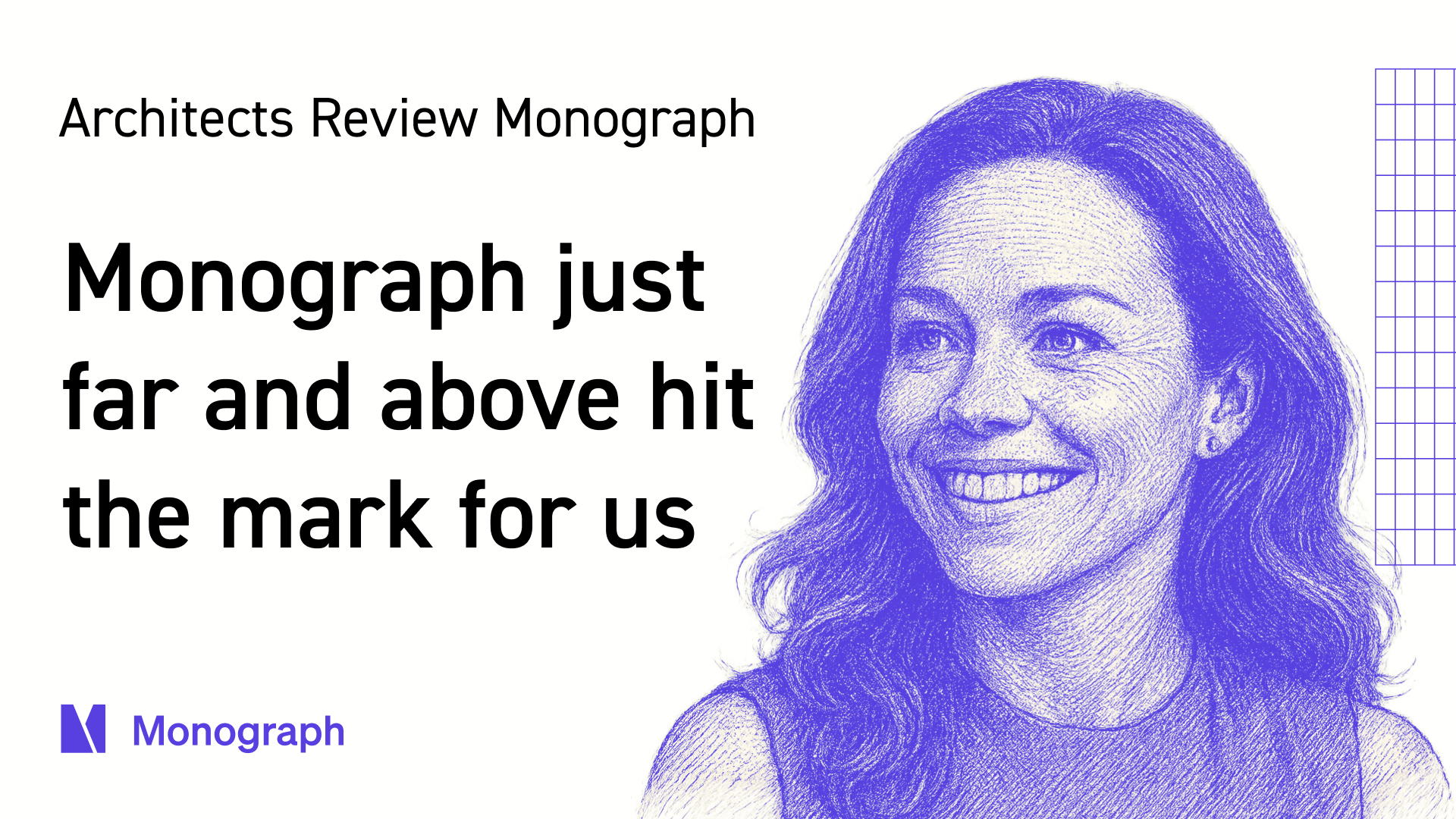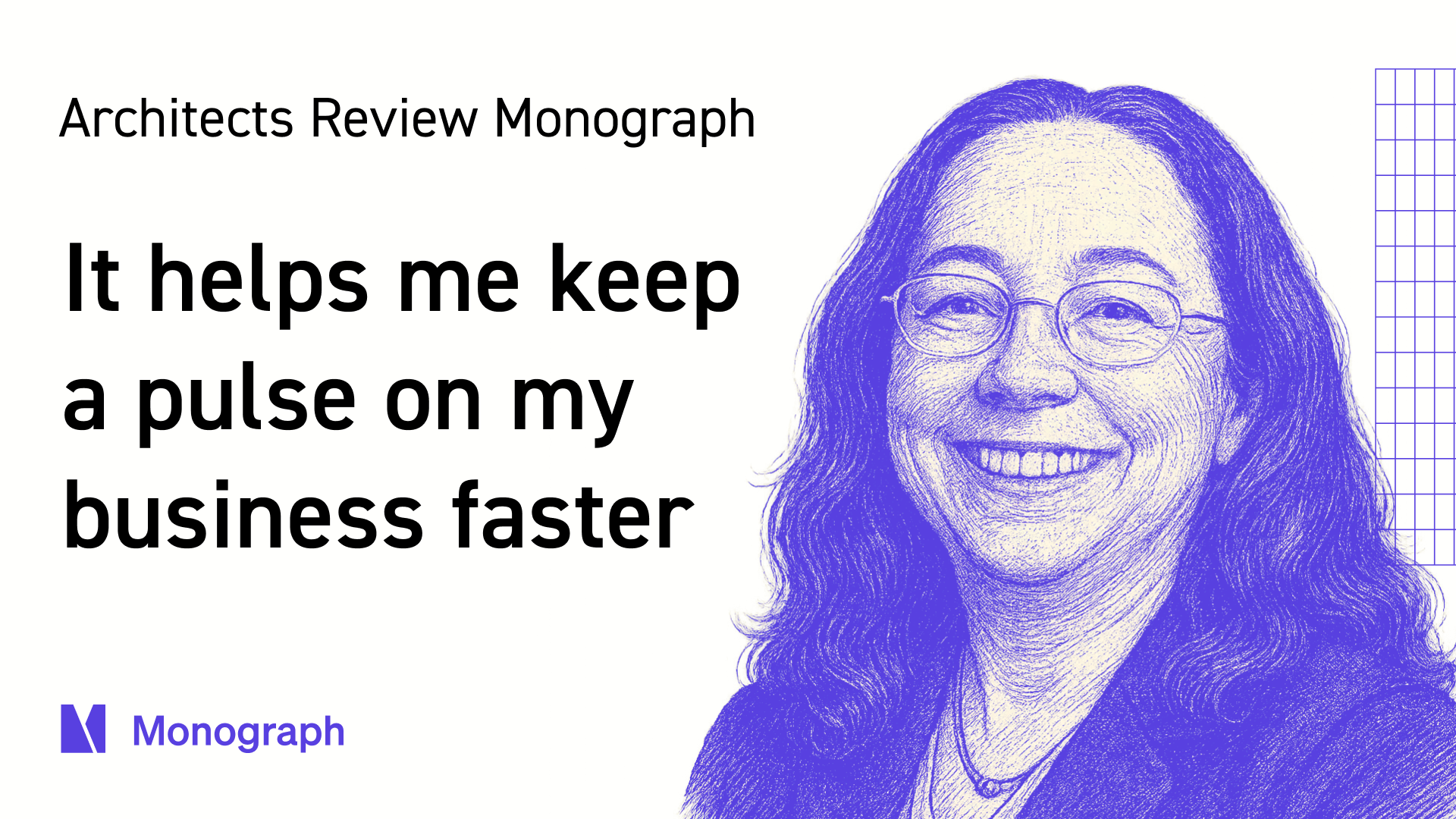Contents
Firm profile
Workshop/APD is a multidisciplinary design firm renowned for its luxury residential, hospitality, and product design. By seamlessly integrating architecture, interiors, and custom furniture, the firm creates cohesive, one-of-a-kind experiences. Facing challenges with mismatched tools and inefficient workflows, Workshop/APD switched to Monograph as its business operating system to streamline operations and support its continued growth.
The Hidden Cost of Spreadsheets and Generic Software
Workshop/APD faced significant challenges as their team grew. Spreadsheets, once useful for tracking project budgets and timelines, became unmanageable. Data was often outdated or wrong, which disrupted meetings and created inefficiencies. These tools simply couldn’t keep up with the firm’s increasing complexity.
The firm also tried generic tools like BigTime and Mavenlink, but they weren’t designed for architecture firms. They lacked the functionality and visual clarity Workshop/APD needed to manage projects effectively. Leadership found themselves spending too much time piecing together fragmented information with supplemental spreadsheets.
But without reliable tools, the firm struggled to maintain alignment across teams. Junior staff and project managers couldn’t see the financial health of projects, leaving senior leaders to carry the weight of tracking and troubleshooting operations.
"Our spreadsheet was only as effective as the last person who edited it. If it was out of date, it was not useful, and every meeting that hinged on it became unproductive. Those meetings are expensive, and they need to be productive."
—Thomas Zoli, Principal Architect, Workshop/APD
By simplifying operations, Monograph lets Workshop/APD concentrate on crafting distinctive, detail-driven architecture and design projects.
Architects Need Better Business Tools
Architects aren’t trained to run businesses. Professional practice classes touch on contracts and project delivery but often skip the financial skills needed to lead a firm. At Workshop/APD, Monograph filled that gap with a practical, business-focused solution.
With Monograph, financial management became easier and more accessible. Budgets, staffing, and timelines were visible to everyone. Project managers and junior staff could see how their work affected project health, while firm leadership relied on real-time data to make better decisions. This new transparency reshaped how Workshop/APD operated.
Monograph helped Workshop/APD integrate business thinking into their design culture. Architects learned to see the bigger picture—balancing creative work with the financial health of projects and the success of the firm.
"Monograph is like the business education for architects baked into the software. Just by using it, our team understands the dollars and cents behind every project they’re working on."
—Thomas Zoli, Principal Architect, Workshop/APD
.png)
Instant Accountability, Better Communication
Monograph immediately improved communication at Workshop/APD. By providing a 10,000-foot view of projects, it aligned everyone—from junior staff to principals—on a shared understanding. No one was left in the dark, and teams started collaborating better from day one.
Teams could quickly identify issues like budget misalignments or staffing gaps and fix them before they escalated. This real-time problem-solving helped keep projects on track and reduced unnecessary stress. Leadership could rely on accurate, up-to-date data when creating invoices, which reduced back-and-forth billing corrections that impact cash flow.
Most importantly, Monograph empowered the entire team. Project managers took full ownership of timelines and budgets, while junior staff gained insight into their impact on the firm’s success. Everyone knew where things stood and how to keep moving forward.
"The beauty of Monograph is that you’re troubleshooting live. Whether it’s budget misalignment, staffing gaps, or time overages, you can see the issues in real time and act on them immediately."
—Thomas Zoli, Principal Architect, Workshop/APD
With Monograph, Workshop/APD continues to push the envelope—driving innovation in design, refining business management, and empowering their people to excel.
Overcoming Hesitations to Embrace Change
Many architecture firms hesitate to adopt new tools, fearing disruption or a steep learning curve. These firms often rely on spreadsheets or outdated systems, unsure how new software will fit into their workflows. This hesitation can limit growth and efficiency.
But Workshop/APD didn’t hesitate. They consistently push the envelope to improve how they operate and knew they couldn’t rely on cumbersome spreadsheets when so much was at stake. From day one, they saw Monograph as the tool to streamline processes and align their team.
What they found was immediate clarity and improved communication. Monograph helped them spot issues like underbilling or misaligned budgets before they escalated. The platform reshaped their operations, empowering everyone to understand the financial health of projects and contribute to the firm’s success.
"What will change in your world upon using a platform like Monograph? It’s really easy to outline the benefits… all of the things you’ve been trying to ask questions about—how did this happen? How did we not make money on this project? How did our billing not get updated automatically?—all of those things effectively get normalized and corrected just by leaning into the platform."
—Thomas Zoli, Principal Architect, Workshop/APD
With Monograph, Workshop/APD aligns design excellence with efficient project management.
More Than Software: Monograph Evolves With You
What makes Monograph truly unique is how it feels like a partner, not just a tool. From day one, Monograph’s team worked closely with Workshop/APD, listening to their feedback and incorporating it into the platform. Features like invoicing tools and project templates came directly from these conversations.
Monograph also stood out for its industry-specific focus. Unlike g eneric software, it was built for architects, with features and workflows tailored to how firms like Workshop/APD operate. This alignment made it a natural fit for the firm’s multidisciplinary approach.
As Workshop/APD continues to grow, Monograph has proven to be a scalable solution. Its intuitive design, responsive support, and ability to unify teams across disciplines ensure it will remain an essential part of their success.
"We’ve asked for features, and Monograph has delivered beautifully. They’re responsive and open to making the product better for all of us."
—Thomas Zoli, Principal Architect, Workshop/APD
.jpeg)
Shaping Design and Business Excellence
Workshop/APD’s partnership with Monograph showcases how the right tools can revolutionize both design and business operations. By replacing outdated, inefficient systems with an intuitive platform tailored for architects, they’ve streamlined workflows, fostered accountability, and created a culture where every team member contributes to the firm’s success.
Tired of complicated management workflows? Get started with Monograph


